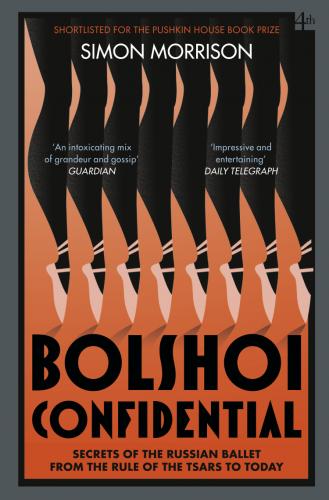4th Estate
An imprint of HarperCollinsPublishers
1 London Bridge Street
London SE1 9GF
This 4th Estate paperback edition published in 2017
First published in Great Britain in 2016 by 4th Estate
First published in the United States by W. W. Norton & Company, Inc. in 2016
Copyright © 2016 by Simon Morrison
Cover image by Jo Walker
Anna Sobeshchanskaya as Odette; Gorsky’s ‘choreographic photo etudes,’ 1907–09; Simon Virsaladze, Alexander Lavrenyuk, and Plisetskaya, Legend of Love, 1972 courtesy of Bakhrushin Museum. The Bolshoi Theater, May 15, 2015, courtesy of author.
All other images courtesy of Russian State Archive of Literature and Art.
Simon Morrison asserts the moral right to be identified as the author of this work in accordance with the Copyright, Design and Patents Act 1988
A catalogue record for this book is available from the British Library.
All rights reserved under International and Pan-American Copyright Conventions. By payment of the required fees, you have been granted the non-exclusive, non-transferable right to access and read the text of this e-book on screen. No part of this text may be reproduced, transmitted, downloaded, decompiled, reverse engineered, or stored in or introduced into any information storage and retrieval system, in any form or by any means, whether electronic or mechanical, now known or hereinafter invented, without the express written permission of HarperCollins.
Source ISBN: 9780007576630
Ebook Edition © October 2016 ISBN: 9780007576623
Version: 2017-05-31
For Nika, who retired from ballet
before she was five.
• • •
CONTENTS
A NOTE ON TRANSLITERATION AND DATES
3. FLEET AS LIGHTNING: The Career of Ekaterina Sankovskaya
A Note on Transliteration and Dates
• • •
THE TRANSLITERATION SYSTEM used in this book is the one devised, phonetically, by Gerald Abraham for the New Grove Dictionary of Music and Musicians (1980), with the modifications introduced by Richard Taruskin in Mussorgsky: Eight Essays and an Epilogue (1993). It renders the Russian letter ы as ï and the аи combination in the name Михаил as Mikhaíl. Exceptions to the system concern some commonly accepted spellings of Russian and non-Russian names and places (for example, Alexei rather than Aleksey, Dmitri rather than Dmitriy, Maddox rather than Medoks, St. Petersburg rather than Sankt-Peterburg) and surname suffixes (Verstovsky rather than Verstovskiy). For ease on the eye, I favored Ekaterina over Yekaterina and Elena over Yelena. In the bibliographic citations, however, the transliteration system is heeded without exception (Dmitriy rather than Dmitri, and so on). Surname suffixes are presented intact, and soft signs preserved as diacritical apostrophes.
RUSSIA RETAINED USE of the Julian calendar from antiquity until January 1, 1918, when the Bolsheviks under Lenin mandated the conversion to the Gregorian calendar of western Europe. Before the reign of Peter the Great (1682–1725), Russians marked the start of the year on September 1 rather than January 1, and numbered years from the date of the creation of the Earth rather than the birth of Christ. Peter the Great reformed the counting of the years but upheld the use of the Julian calendar in deference to the Russian Orthodox Church. So in effect, before the Bolshevik overthrow of Tsar Nicholas II, the Russian calendar was twelve days behind that of the western European calendar. In this book, dates are specified according to the calendar in use in Russia: Julian before 1918 (abbreviated O.S.), Gregorian afterward.
ON THE NIGHT of January 17, 2013, Sergey Filin, artistic
